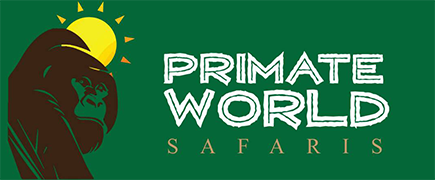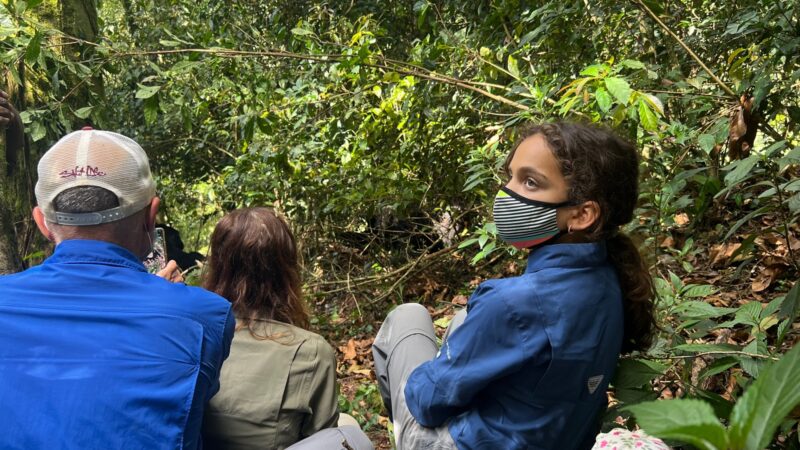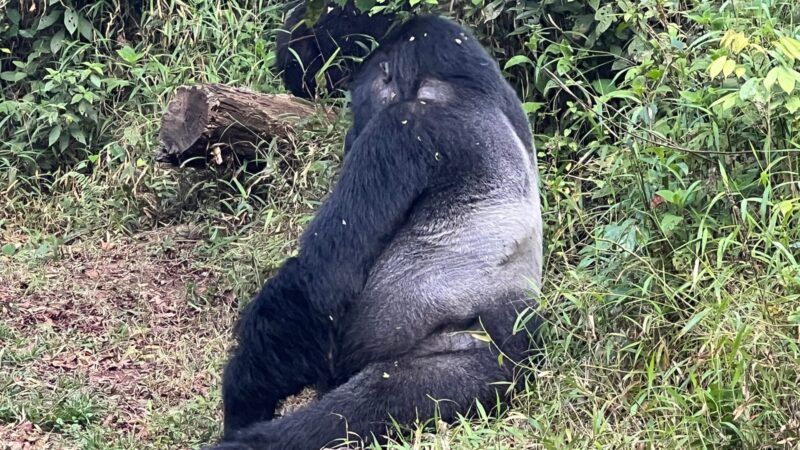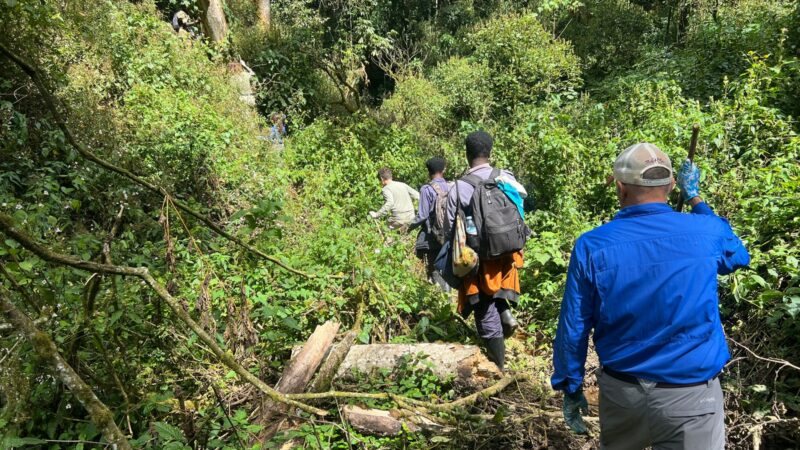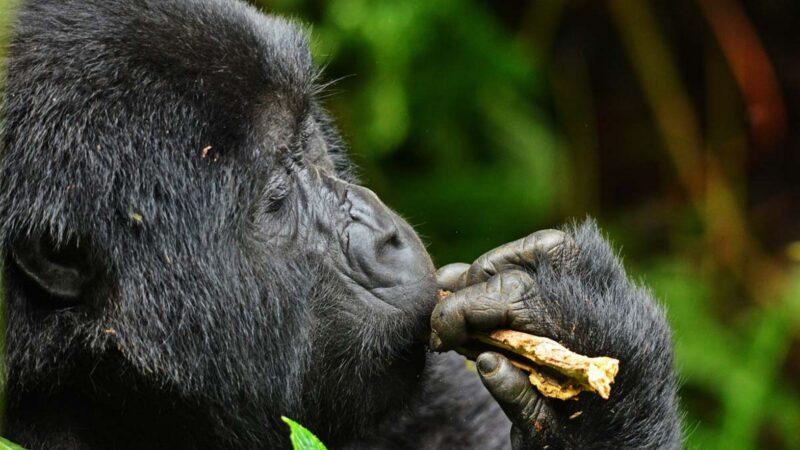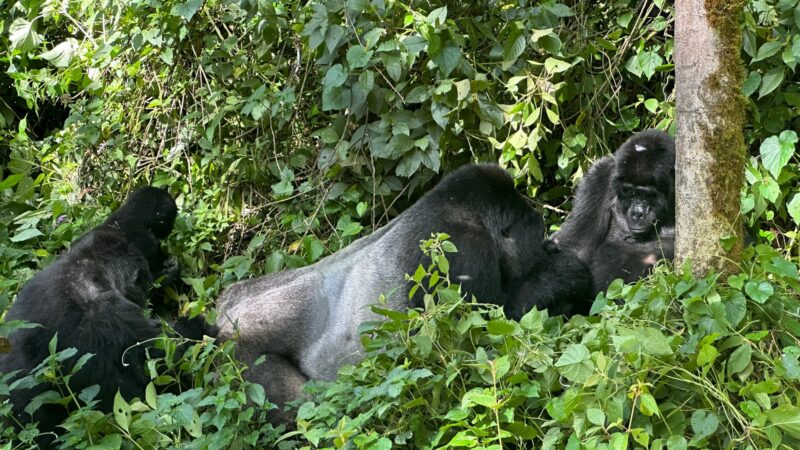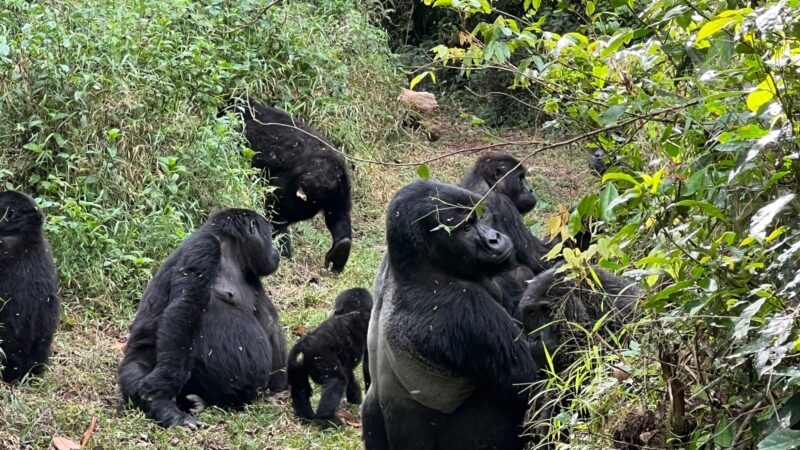Experience Africa’s Wilderness
Gorilla Trekking Safaris in Uganda and Rwanda
Primate World Safaris
Primate World Safaris is a premier local Uganda Safaris Tour Company, offering a wide array of services to visitors and tourists exploring East Africa. Specializing in Gorilla Trekking Safaris, we provide exceptional tours to Bwindi, Mgahinga, and Volcanoes National Parks. Our extensive range of services includes day tours, chimp tracking tours, game viewing safaris, community tours, birding adventures, white water rafting and kayaking, hiking and nature walks, car hire, and more. Our Uganda Safaris and Rwanda Safari packages are fully customizable to match your travel preferences, whether you’re interested in our recommended Gorilla Trekking Safaris, romantic honeymoon packages, or shared family-friendly dream vacations. Let us guide you on where to go and ensure an unforgettable experience.
Exceptional Best 6 Gorilla Trekking Safaris to Uganda and Rwanda: 2025, 2026 Best Selling
3 Days Uganda Double Gorilla Trekking Safari
Embark on a thrilling 3 Days Uganda Double Gorilla Trek adventure from Kigali, Rwanda, to Uganda’s Bwindi Impenetrable Forest and Mgahinga National Park, two of the world’s premier destinations for gorilla trekking Safaris.
3 Days Exclusive Rwanda Gorilla Trekking Safari
Embark on an unforgettable 3-day Exclusive Rwanda Gorilla Trekking Safari journey through Rwanda’s lush landscapes and encounter the majestic mountain gorillas in their natural habitat on this exclusive gorilla trekking tour.
3 Days Bwindi Forest Gorilla Trekking Safari
The 3 Days Bwindi Forest Gorilla Trekking Safari Uganda will take you to Bwindi, located amidst magnificent forests at the end of Southwest Uganda, across the steep escarpments of the western rift valley. Bwindi Forest.
4 Days Rwanda Exclusive Gorilla Trek
Embark on a captivating 4 Days Rwanda exclusive gorilla trek and golden monkey tracking safari, immersing yourself in the captivating landscapes and unique wildlife of this remarkable country.
4 Days Double Gorilla Trekking Safari
Embark on an extraordinary 4 Days Double Gorilla Trekking Safari in Rwanda & Uganda, spanning the enchanting landscapes of Rwanda’s Volcanoes National Park and Uganda’s Bwindi Forest.
3 Days Gorilla Trekking & Kigali Tour
3 Days Gorilla Trekking in Rwanda & Kigali City Tour (Mountain Gorilla Trekking Experience). Mountain gorillas survive on vegetation as their daily food, which comprises leaves, buds, shoots, fruits, & celery.
Gorilla Trekking in Bwindi Impenetrable Forest
Where to Go Mountain Gorilla Trekking Safari in Africa?
Gorilla trekking safaris are primarily conducted in three central African countries: Uganda, Rwanda, and the Democratic Republic of Congo (DRC), each offering unique experiences and diverse landscapes.
Each destination provides its unique perspective on gorilla conservation and allows trekkers to witness these majestic creatures up close while supporting vital conservation efforts and local communities.
Bwindi Impenetrable National Park, Mgahinga Gorilla National Park, Volcanoes National Park, and Virunga National Park Congo.
Face To Face with Silverback Gorillas in Uganda
Exceptional 3 Gorilla Trekking Destinations in Africa
Uganda Gorilla Trekking
Known for the Bwindi Impenetrable National Park, a UNESCO World Heritage Site, and Mgahinga Gorilla National Park, Uganda provides a rich, dense forest environment home to over half of the world’s mountain gorilla population.
Rwanda Gorilla Trekking
The Volcanoes National Park, famed for its stunning mountainous scenery, is Rwanda’s premier gorilla trekking destination. This park is historically significant, being the base for Dian Fossey’s groundbreaking gorilla conservation work.
D.R. Congo Gorilla Trekking
The Virunga National Park offers a more rugged and less commercialized trekking experience in the DRC. Africa’s oldest national park boasts a dramatic landscape, including active volcanoes and lush rainforests.
The Top 16 Frequently Asked Questions About Gorilla Trekking Safaris
Gorilla trekking safaris offer an unparalleled opportunity to observe these majestic primates in their natural habitat, primarily in regions such as Uganda, Rwanda, and the Democratic Republic of Congo. A common question concerns the best time for trekking, with the dry seasons from June to September and December to February being ideal due to easier terrain navigation. Trekkers often inquire about the physical demands; while the treks can be strenuous, requiring a reasonable level of fitness, the reward of encountering gorillas is incomparable.
Permits are essential and should be booked well in advance due to limited availability, typically costing between $800 to $1500, varying by country. Additionally, there are strict guidelines for interaction, including maintaining a distance of at least 7 meters to ensure the safety and health of both humans and gorillas. Lastly, it’s crucial to pack appropriately, with sturdy hiking boots, waterproof clothing, and insect repellent being essentials to navigate the often rugged and humid jungle environment.
A Complete Guide for the 16 Frequently Asked Questions About Gorilla Trekking Safaris
- What is Gorilla Trekking?
- Where Can I Go Gorilla Trekking?
- How Much Does Gorilla Trekking Cost?
- When is the Best Time to Go Gorilla Trekking?
- What Should I Bring on a Gorilla Trek?
- How Physically Demanding is Gorilla Trekking?
- Is There an Age Limit for Gorilla Trekking?
- How Close Can I Get to the Gorillas?
- Do I Need a Guide for Gorilla Trekking?
- What Precautions Are Taken to Protect the Gorillas?
- Can I Take Photos of the Gorillas?
- What Are the Chances of Seeing Gorillas?
- How Long Does a Gorilla Trek Last?
- Are There Health Risks Associated with Gorilla Trekking?
- Do I Need a Visa to Go Gorilla Trekking?
- Is Gorilla Trekking Safe?
Gorilla Trekking in Rwanda - Ultimate Bucket List
A Detailed Guide for Frequently Asked Questions About Gorilla Trekking Safaris
What is Gorilla Trekking?
Gorilla trekking safaris are immersive wildlife experiences where participants hike through dense forests to observe mountain gorillas in their natural habitat, primarily in Uganda, Rwanda, and the Democratic Republic of Congo. These safaris offer a unique opportunity to witness the daily lives of these critically endangered primates, including their social interactions, foraging, and grooming behaviors. Guided by experienced trackers, participants navigate through challenging terrains, often involving steep and muddy trails, to reach the gorilla families.
The treks vary in duration and difficulty, requiring a reasonable level of fitness and stamina. Permits are mandatory and limited to reduce human impact on the gorilla populations, ensuring sustainable tourism practices. Gorilla trekking safaris not only provide an unforgettable adventure but also play a crucial role in conservation efforts by generating revenue that supports local communities and ongoing protection initiatives for these remarkable animals.
Where Can I Go Gorilla Trekking?
Gorilla trekking safaris are primarily conducted in three central African countries: Uganda, Rwanda, and the Democratic Republic of Congo (DRC), each offering unique experiences and diverse landscapes. Each destination provides its unique perspective on gorilla conservation and allows trekkers to witness these majestic creatures up close while supporting vital conservation efforts and local communities.
- Uganda: Known for the Bwindi Impenetrable National Park, a UNESCO World Heritage Site, and Mgahinga Gorilla National Park, Uganda provides a rich, dense forest environment home to over half of the world’s mountain gorilla population.
- Rwanda: The Volcanoes National Park, famed for its stunning mountainous scenery, is Rwanda’s premier gorilla trekking destination. This park is historically significant, being the base for Dian Fossey’s groundbreaking gorilla conservation work.
- Democratic Republic of Congo: The Virunga National Park offers a more rugged and less commercialized trekking experience in the DRC. Africa’s oldest national park boasts a dramatic landscape, including active volcanoes and lush rainforests.
How Much Does Gorilla Trekking Cost?
The cost of gorilla trekking safaris varies depending on the country, the season, and other logistical factors. Here’s a detailed breakdown:
Uganda
In Uganda, a gorilla trekking permit costs $800 per person. This permit provides access to Bwindi Impenetrable National Park or Mgahinga Gorilla National Park. The price includes park entry, the trek itself, and an hour spent observing the gorillas. Costs may rise slightly during peak seasons from June to September and December to February due to increased demand.
Rwanda
Rwanda charges the highest for gorilla trekking permits at $1,500 per person. This fee reflects the high-end, exclusive experience offered in Volcanoes National Park. Rwanda emphasizes luxury tourism, with well-developed infrastructure and high standards of service contributing to the higher permit cost.
Democratic Republic of Congo
In the DRC, permits are the most affordable, costing $400 per person for trekking in Virunga National Park. However, the DRC presents more logistical challenges and security considerations, which may affect overall travel costs and planning.
Additional costs for gorilla trekking safaris include accommodation, transportation, guides, porters, and tips. Tour packages can help streamline these logistics, often ranging from budget to luxury options. It’s essential to book permits well in advance, as they are limited and in high demand, ensuring both a memorable experience and contribution to conservation efforts.
When is the Best Time to Go Gorilla Trekking?
The best time to go on gorilla trekking safaris is during the dry seasons, which vary slightly depending on the country.
Uganda and Rwanda
The primary dry seasons are from June to September and December to February. During these months, the weather is more favorable for trekking, with less rain making the trails less slippery and easier to navigate. The chances of seeing gorillas are also higher as they tend to stay at lower altitudes when the weather is dry.
Democratic Republic of Congo
Similarly, the dry seasons in the DRC, particularly from June to September and January to February, offer the best conditions for trekking in Virunga National Park. The dry weather facilitates easier trekking and a more enjoyable overall experience.
While gorilla trekking safaris are possible year-round, the wet seasons from March to May and October to November can make the experience more challenging due to muddy and slippery trails. However, these periods can also offer benefits such as fewer tourists, a more intimate experience, and lush, vibrant scenery. Additionally, permits might be easier to obtain and sometimes even discounted during the off-peak seasons.
Ultimately, the best time to go gorilla trekking depends on individual preferences for weather conditions, crowd levels, and overall trekking experience.
What Should I Bring on a Gorilla Trek?
Packing appropriately for gorilla trekking safaris is crucial to ensure a comfortable and enjoyable experience. Here is a detailed list of essential items:
Clothing
- Long-Sleeved Shirts and Long Pants: Protect against insect bites, stinging plants, and the sun.
- Waterproof Jacket and Pants: Essential for unexpected rain showers and keeping dry in the humid rainforest environment.
- Sturdy Hiking Boots: High-quality, waterproof boots with good ankle support are critical for navigating the often muddy and uneven trails.
- Gaiters: Useful for keeping mud and insects out of your boots.
- Hat and Gloves: A wide-brimmed hat for sun protection and gloves for handling rough terrain or vegetation.
Gear
- Daypack: A comfortable, waterproof backpack to carry all your essentials.
- Water Bottle: Staying hydrated is crucial during the trek.
- Snacks: High-energy snacks like nuts, dried fruit, and energy bars for sustained energy during the trek.
- Walking Stick: Often provided by guides, but having a sturdy, collapsible walking stick can be very helpful.
Miscellaneous
- Insect Repellent: Protects against insects, especially mosquitoes.
- Sunscreen: Necessary even in the forest to protect against UV rays.
- Binoculars: Useful for spotting wildlife at a distance.
- Camera with Extra Batteries: To capture memories, but ensure it is silent to avoid disturbing the gorillas.
- Plastic Bags: For waterproofing gear and carrying out any trash.
Health and Safety
- First Aid Kit: Include basic supplies like band-aids, antiseptic wipes, and any personal medications.
- Hand Sanitizer and Wet Wipes: For maintaining hygiene in the forest.
- Travel Insurance: Ensure it covers trekking activities.
Packing these essentials will help you be prepared for the physical demands of the trek and the unpredictable conditions of the rainforest, ensuring a safe and enjoyable gorilla trekking safari.
How Physically Demanding is Gorilla Trekking?
Gorilla trekking safaris are physically demanding adventures that require a good level of fitness and stamina. Trekkers can expect to hike through dense forests, navigate steep and often muddy trails, and ascend and descend uneven terrain for anywhere between 1 to 8 hours, depending on the location of the gorilla families on that particular day. The altitude, which can range from 1,500 to 3,000 meters, adds an extra challenge, especially for those not accustomed to higher elevations.
The humid rainforest environment can make the trek more strenuous, and trekkers should be prepared for sudden weather changes, including rain. Despite these challenges, the experience is immensely rewarding, with the opportunity to spend up to an hour observing the gorillas in their natural habitat. Guides and porters are available to assist, and participants are encouraged to take breaks as needed to manage their pace and energy levels. Proper preparation, including physical training and appropriate gear, can significantly enhance the trekking experience.
Is There an Age Limit for Gorilla Trekking?
Yes, there is an age limit for gorilla trekking safaris to ensure the safety and well-being of both participants and the gorillas. The minimum age requirement is typically 15 years old across Uganda, Rwanda, and the Democratic Republic of Congo. This age limit is set because the physical demands of the trek can be quite strenuous, and younger children may not have the necessary endurance and strength. Additionally, the presence of very young children might disturb the gorillas, whose behavior can be unpredictable.
The age limit also helps in mitigating health risks, as younger children are more susceptible to illnesses that could potentially be transmitted to the gorillas. While there is no upper age limit, older participants should realistically assess their fitness levels and consider the physical challenges involved. Tour operators often recommend a medical check-up for older trekkers or those with health concerns to ensure they can safely handle the demands of the trek.
How Close Can I Get to the Gorillas?
During gorilla trekking safaris, strict guidelines are in place to protect both the gorillas and the trekkers. The recommended distance to maintain is at least 7 meters (approximately 23 feet) from the gorillas. This distance minimizes the risk of transmitting diseases between humans and gorillas, as gorillas are susceptible to many human illnesses, including respiratory infections. Additionally, maintaining this buffer helps to avoid stressing the gorillas, as they are wild animals and can become agitated by close human presence.
Rangers and guides strictly enforce this rule and will provide instructions on how to behave if a gorilla approaches closer than the recommended distance. Despite this precaution, the experience is incredibly intimate and allows for exceptional observation of these majestic creatures in their natural habitat. The adherence to these guidelines ensures that gorilla trekking safaris are conducted safely and sustainably, preserving the health and well-being of the gorilla populations.
Do I Need a Guide for Gorilla Trekking?
Yes, hiring a guide is essential for gorilla trekking safaris to ensure a safe, informative, and enriching experience. Guides are highly trained and knowledgeable about the behavior, ecology, and conservation of mountain gorillas, as well as the specific terrain and trails within the national parks. They play a crucial role in locating gorilla families, interpreting their behaviors during the trek, and ensuring that participants adhere to park regulations, including maintaining a safe distance from the gorillas.
Guides also enhance the experience by providing insights into the local flora and fauna, cultural context, and conservation efforts in the region. They are trained to handle any unexpected situations that may arise during the trek, ensuring the safety of both visitors and the gorillas. Additionally, guides often have relationships with trackers who locate the gorilla groups daily, increasing the chances of successful sightings. Overall, hiring a guide enhances the educational value and safety of gorilla trekking safaris, making it a more enriching and memorable adventure.
What Precautions Are Taken to Protect the Gorillas?
During gorilla trekking safaris, strict precautions are taken to protect the gorillas and minimize human impact on their natural habitat. One of the primary measures is limiting the number of visitors allowed to trek each gorilla group per day, typically to a maximum of 8 people. This helps reduce stress on the gorillas and lowers the risk of disease transmission from humans to gorillas, as these primates are highly susceptible to human illnesses. Trekkers are required to maintain a minimum distance of 7 meters (approximately 23 feet) from the gorillas to minimize disturbance and ensure their safety.
Guides and rangers closely monitor visitor behavior to enforce these regulations and provide guidance on appropriate conduct during encounters with gorillas. Additionally, strict guidelines govern the duration of visits, usually limited to one hour per gorilla group per day, to further mitigate stress and disruption to the animals’ daily routines.
Education and awareness campaigns also play a significant role in promoting responsible tourism practices among visitors, emphasizing the importance of conservation and sustainability in preserving gorilla populations and their habitats for future generations. These measures collectively ensure that gorilla trekking safaris are conducted in a manner that prioritizes the well-being and long-term survival of these endangered primates.
Can I Take Photos of the Gorillas?
Yes, you are generally allowed to take photos of the gorillas during gorilla trekking safaris, but there are specific guidelines to follow to ensure the safety of both the gorillas and yourself. It’s important to remember that flash photography is strictly prohibited as it can disturb the gorillas and potentially stress them. Instead, use a camera with a silent shutter to minimize noise and disturbance.
Maintaining a respectful distance of at least 7 meters (approximately 23 feet) from the gorillas is required, and guides will instruct you on how to behave to ensure the animals remain comfortable and undisturbed. Taking photos is a wonderful way to capture memories of this incredible experience, but it’s crucial to prioritize the well-being of the gorillas and adhere to the guidelines set forth by the park authorities and your guides.
What Are the Chances of Seeing Gorillas?
The chances of seeing gorillas during a gorilla trekking safari are generally very high, but they can vary based on several factors. In Uganda, Rwanda, and the Democratic Republic of Congo, where most gorilla trekking safaris occur, the success rate for finding gorillas is typically over 95%. This high success rate is largely due to the efforts of trained guides and trackers who monitor the gorillas daily, allowing them to locate their approximate whereabouts before each trekking session begins.
However, sightings are not guaranteed as gorillas are wild animals and their movements can be unpredictable. Factors such as weather conditions, the density of vegetation, and the distance of the gorilla family from the starting point of the trek can influence the ease and speed of locating them. Despite these variables, the experience of trekking through lush forests and encountering these majestic creatures in their natural habitat is almost always rewarding and memorable.
How Long Does a Gorilla Trek Last?
A gorilla trek typically lasts between 2 to 8 hours, depending on various factors such as the location of the gorilla family, terrain conditions, and the trekking speed of the group. In Uganda, Rwanda, and the Democratic Republic of Congo, where gorilla trekking safaris are conducted, the duration of the trek can vary widely.
The trek begins early in the morning with a briefing by park rangers and guides, during which visitors are allocated to a specific gorilla family group. Treks involve hiking through dense forests, sometimes steep and muddy terrain, to reach the area where the gorillas were last observed. The actual time spent with the gorillas is limited to a maximum of one hour once they are located.
Factors influencing the duration include the distance the gorillas are from the starting point, the difficulty of the terrain, and the pace of the trekking group. Guides and trackers accompany visitors throughout the trek, helping to locate the gorillas and ensuring safety and adherence to park regulations. Overall, the length of the trek varies but the entire experience typically lasts half a day, with visitors returning to their accommodations by mid to late morning or early afternoon.
Are There Health Risks Associated with Gorilla Trekking?
Yes, there are some health risks associated with gorilla trekking, primarily related to the physical demands of the activity and the environment in which it takes place. Gorilla trekking safaris often involve hiking through dense forests with uneven terrain, which can be physically demanding, especially at higher altitudes. Participants should be in reasonably good health and fitness to handle the trekking distances and elevation changes.
In terms of specific health risks, one concern is the potential transmission of diseases between humans and gorillas. Gorillas are susceptible to many human illnesses, such as respiratory infections, influenza, and gastrointestinal diseases. To minimize this risk, visitors who are ill or showing signs of illness, such as coughing or sneezing, are generally not allowed to participate in gorilla trekking activities. Participants need to practice good hygiene, including proper handwashing and covering their mouths and noses when coughing or sneezing.
Additionally, the tropical rainforest environment where gorilla trekking takes place can expose trekkers to insects, including mosquitoes that may carry diseases like malaria. Visitors are advised to take appropriate precautions, such as using insect repellent, wearing long-sleeved clothing and pants, and taking antimalarial medication if recommended for the region.
Overall, while gorilla trekking is a safe and highly rewarding experience, it’s essential for participants to be aware of these health considerations and to follow guidance provided by park authorities and tour operators to ensure both their safety and the well-being of the gorillas.
Is Gorilla Trekking Safe?
Yes, gorilla trekking is generally considered safe when conducted under the guidance of experienced guides and within established national park regulations. The safety protocols and precautions in place are designed to protect both visitors and the gorillas themselves. Here are key reasons why gorilla trekking is considered safe:
Experienced Guides
Trained guides and rangers accompany trekking groups to ensure safety, provide information about gorilla behavior, and enforce park regulations.
Group Size
Trekking groups are typically limited to a maximum of 8 visitors per gorilla family per day. This helps minimize stress on the gorillas and ensures a more controlled environment for both humans and animals.
Maintaining Distance
Visitors are required to maintain a minimum distance of 7 meters (approximately 23 feet) from the gorillas. This reduces the risk of transmitting diseases between humans and gorillas and helps avoid disturbing the animals.
Health Precautions
Visitors who are ill or showing signs of illness are not allowed to participate in gorilla trekking activities to prevent potential disease transmission to the gorillas.
Park Regulations
National parks where gorilla trekking takes place have strict regulations in place to protect the animals and their habitat. These regulations are enforced by guides and rangers to ensure the well-being of both gorillas and visitors.
Environmental Awareness
Responsible tourism practices emphasize minimizing the impact on the environment and wildlife, including gorillas. This includes guidelines for waste disposal, respecting wildlife habitats, and supporting conservation efforts.
While gorilla trekking is safe under normal circumstances, participants need to be physically prepared for the trekking experience, follow guidance from guides and rangers, and adhere to park regulations to ensure a safe and enjoyable encounter with these magnificent animals in their natural habitat.
Do I Need a Visa to Go Gorilla Trekking?
Yes, you typically need a visa to enter the countries where gorilla trekking safaris are conducted: Uganda, Rwanda, and the Democratic Republic of Congo (DRC). The specific visa requirements vary by country and nationality. Here’s an overview:
Uganda
Most visitors require a visa to enter Uganda. Visas can be obtained online in advance or upon arrival at Entebbe International Airport or land borders. Single-entry visas are usually valid for up to 90 days.
Rwanda
Rwanda offers an online visa system where visitors can apply in advance. Single-entry visas are typically valid for up to 30 days. Visas can also be obtained upon arrival at Kigali International Airport and some land borders, but it’s advisable to check the latest requirements before traveling.
Democratic Republic of Congo (DRC)
A visa is required for entry into the DRC for most nationalities. The process and requirements can vary, so it’s recommended to obtain the visa in advance from a DRC embassy or consulate. Visa issuance upon arrival is possible at some airports and land borders, but it’s advisable to confirm this option and any associated fees beforehand.
It’s essential to check the specific visa requirements and application procedures well in advance of your gorilla trekking safari to ensure a smooth and hassle-free travel experience. Additionally, ensure your passport is valid for at least six months beyond your intended stay and that you have any required vaccinations or health certificates as per the regulations of each country.
Gorilla Trekking Safaris in Uganda & Rwanda
What You Need to Know, When to Go on A Gorilla Trekking Trip?
Understanding Gorilla Trekking Safari Activity
Gorilla Trekking, or gorilla tracking, is an exhilarating adventure that allows you to observe mountain gorillas in their natural habitats. Uganda and Rwanda are two premier destinations for this experience, primarily in Bwindi Impenetrable National Park and Mgahinga Gorilla National Park in Uganda, and Volcanoes National Park in Rwanda.
These parks are home to the endangered mountain gorillas, and tracking them involves hiking through dense forests and mountainous terrains. The activity is strictly regulated to ensure the conservation of the gorillas and their habitat. Only a limited number of permits are issued each day, and groups are kept small to minimize human impact. The tracking experience is not only about finding the gorillas but also learning about the flora, fauna, and the ecosystem of these lush environments.
Best Time to Go Gorilla Trekking
The best time to go Gorilla Trekking in Uganda and Rwanda is during the dry seasons. In Uganda, these seasons typically run from December to February and June to September.
Similarly, Rwanda’s dry seasons are from June to September and December to February. During these periods, the trails are less muddy and more navigable, making the hike to find the gorillas more manageable and enjoyable.
However, it is worth noting that Gorilla Trekking can be done year-round, as the tropical rainforests receive rainfall throughout the year.
The rainy seasons, from March to May and October to November, offer fewer tourists and potentially lower prices, but the conditions can be more challenging with slippery and muddy trails.
Preparing for the Trek
Proper preparation is crucial for a successful Gorilla Trekking experience. Physically, participants should be in good shape as the trek can be strenuous, involving several hours of hiking in high altitudes and uneven terrain. It’s essential to have sturdy hiking boots, rain gear, gloves, long-sleeved shirts, and trousers to protect against insects and thorny vegetation. Additionally, carrying a daypack with essentials like water, snacks, sunscreen, and insect repellent is recommended.
Permits must be booked well in advance due to high demand, and they come with a significant cost (around $800 to $1500 depending on the country and season). Engaging the services of Primate World Safaris can enhance the experience, providing logistical support, experienced guides, and a deeper understanding of the region’s biodiversity and conservation efforts.
